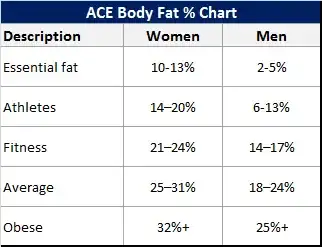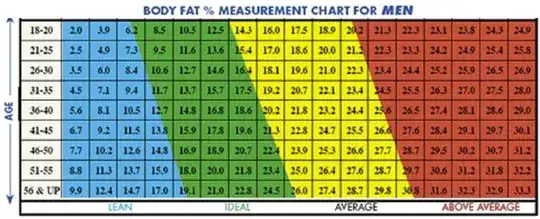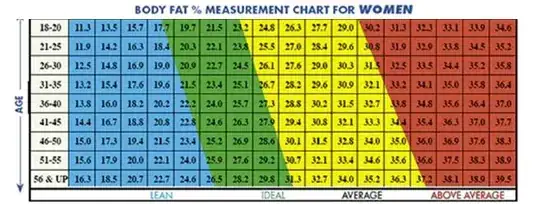Currently I am not aware of any scientifically based recommendations for levels of healthy body fat. There are empirical observations and actuarial tables/considerations, but there hasn't been a definitive "For a 30 year old Caucasian male, 8-15% body fat is ideal for health" studies out yet.
There was a study in 2000 that was published in the American Journal of Clinical Nutrition that attempted to lay some groundwork for this kind of evaluation, and they came up with some interesting formulae for body fat assessment, but it was left as very open ended and needing much more study.
There is a chart available through the American Council on Exercise (ACE) that shows levels of fat for various categories of men and women, but it makes no distinction on age, merely on activity level.

Another pair of charts from Accufitness (Makers of body fat calipers) I like better, as it accounts for both age and sex, but makes no allowances for activity level.


If you look at BMI charts, anything below 18.5 is considered unhealthy, and anything over 25-30 (depending on chart) is trending towards the obese range. These are more statistical/actuarial tables than anything, however and have been around (largely unchanged) since inception in the early/mid 1800's.
As far as the measurement, there are three different types of fat, subcutaneous (under the skin), visceral (Around body organs) and intramuscular (In the muscles, like marbling on a steak). Bioelectric impedance (Such as the scale you mention) work by passing a low electric current through the body and measuring the resistance. These can have a +/- accuracy range of 3-10% depending on the model, and can be affected by hydration, time of day, wet skin, and other factors.
Skin calipers done by an experienced practitioner can have a variance as low as 3%, underwater weighing (Again done properly) can get below 3%, and the gold standard is a DXA scan that measures everything from bone density to total fat.
So far everyone agrees that too low or too high a weight is bad and carries risk of injury/illness/disease, but we haven't agreed yet on what is good for which population cohort.


